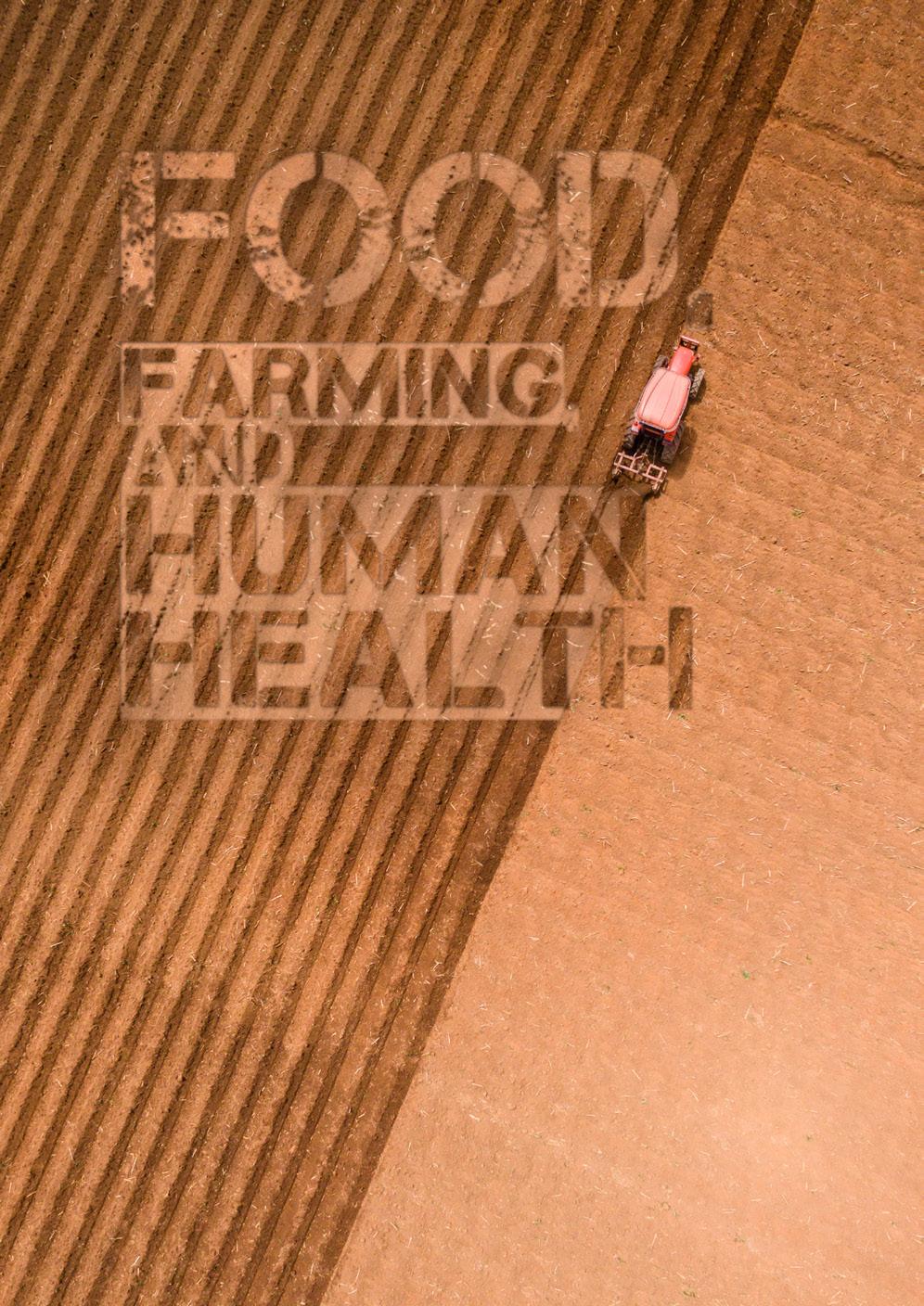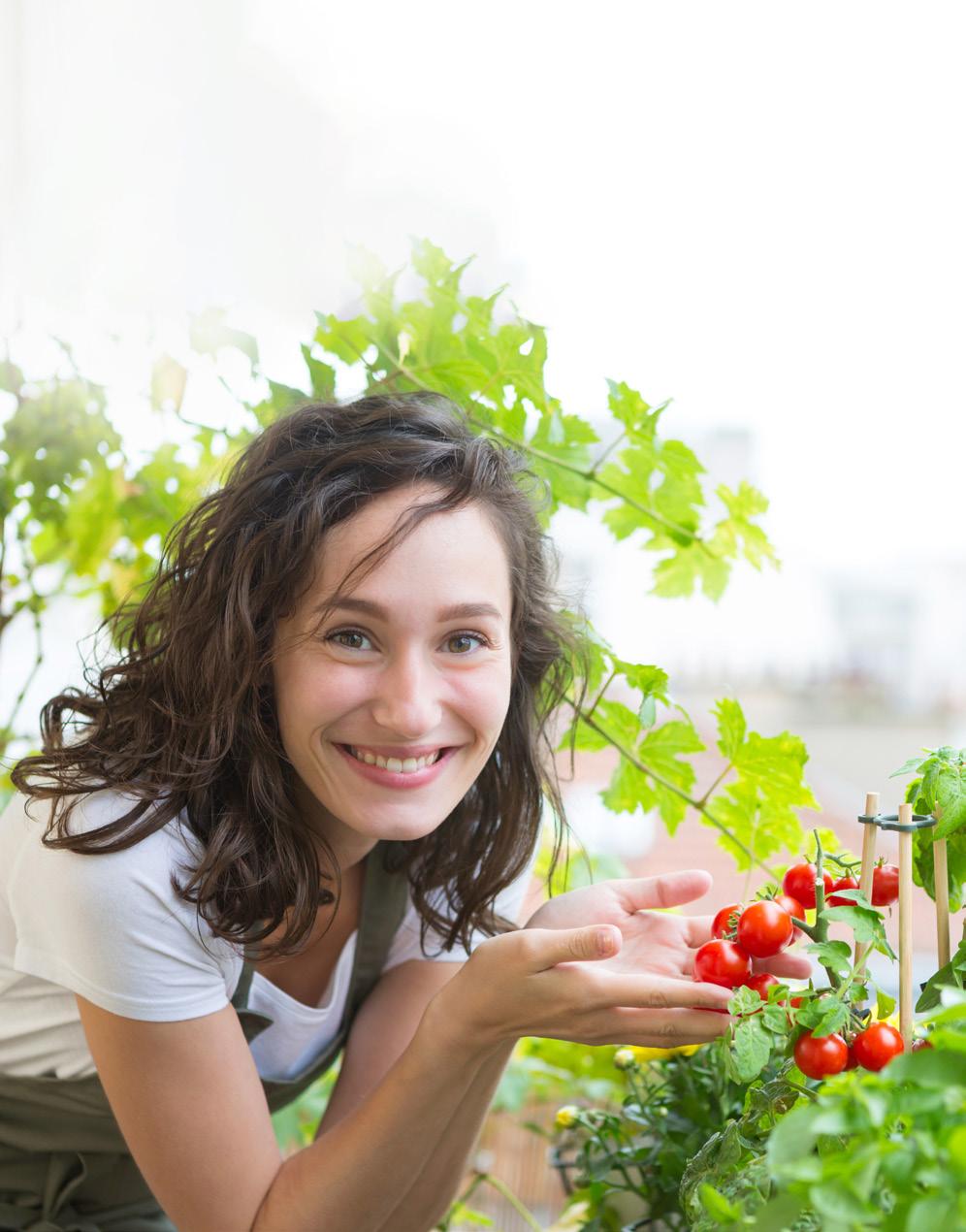
6 minute read
Vintage Veggies
By Albert Mondor
Do you dream about your grandmother’s vegetable garden? If you are a lover of all things vintage, then consider growing ancient fruits and vegetables! These old cultivars will add pops of colour to the unique, farm-fresh meals you cook next summer.
Among the hundreds of varieties currently available on the market, the ancestral vegetable cultivars created in the late 19th and early 20th centuries are now being rediscovered by amateur gardeners. Robust and vigorous, some of these old varieties offer exciting shapes and characteristics while yielding excellent results in the garden.
Growing heritage vegetables is not only a way of honouring the richness of our horticultural heritage but also of protecting and enhancing biodiversity.
Eggplant ‘Turkish Orange’
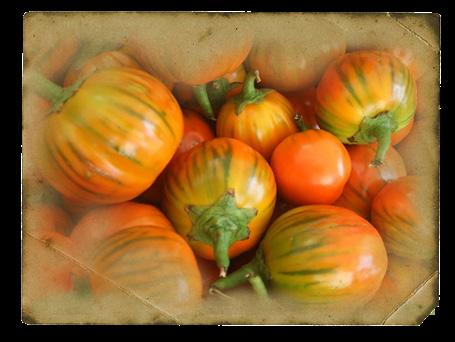
Eggplant ‘Turkish Orange’
It is believed that this eggplant cultivar has been grown in Turkey since the 15th century. It produces spherical, orange fruits streaked with green. Each plant, which reaches a little over 50 centimetres (or 20”) in height, can produce up to 15 fruits!
Space between plants: 45 cm (18”)
Sowing depth: 6 mm
Sowing period: indoors, eight weeks before the last frost date
Number of days from planting to harvest: 85
Light: full sun
Soil: rich, loose, and well-drained
‘Burpee’s Golden’ Beet

‘Burpee’s Golden’ Beet
The ‘Burpee’s Golden’ beet produces round, orange-yellow roots. The vibrant and pretty colour remains even after cooking. Sow these seeds closer together than other beet varieties, as the germination rate of ‘Burpee’s Golden’ is somewhat lower.
Space between plants: 5 cm (2”)
Sowing depth: 13 mm
Sowing period: in the ground, two to three weeks before the last frost date
Number of days from sowing to harvest: 70
Light: full sun
Soil: rich, light, and well-drained
Crapaudine’ Beet

‘Crapaudine’ Beet
Of French origin, this vintage beet variety is distinguished from all the others by its long cone-like root, which sometimes measures more than 30 centimetres (12 inches) in length. The vegetable’s wrinkled peel has a texture similar to thatoftree bark. The darkpurple-red flesh has a delicious, sweet flavour.
Space between plants: 5 cm (2”)
Sowing depth: 13 mm
Sowing period: in the ground, two to three weeks before the last frost date
Number of days from sowing to harvest: 70
Light: full sun
Soil: rich, light, and well-drained
‘Yellow Obtuse du Doubs’ Carrot

‘Yellow Obtuse du Doubs’ Carrot
‘Yellow Obtuse du Doubs’ is a carrot cultivar from France that was developed in the 19th century. Its roots have a beautiful golden colour.
Space between plants: 5 cm (2”)
Sowing depth: 1 cm (0.5”)
Sowing period: in the ground, three to four weeks before the last frost date
Number of days from sowing to harvest: 75
Light: full sun to partial shade
Soil: loose, light, and fresh
‘Brown Russian’ Cucumber

‘Brown Russian’ is a unique cucumber whose taste cannot be beaten! Developed in Ukraine around 1879, this heritage variety produces fruits with a brown peel and crisp white flesh. Its flavour is mild and slightly sweet. Harvest about two months after transplanting outdoors and when the fruit reaches 12 to 18 centimetres (5-7 inches) in length. Fruits can also be harvested younger when their peel is still yellow.
Space between plants: 50 cm (20”)
Sowing depth: 13 mm
Sowing period: indoors, three weeks before transplanting outdoors (after the last frost and when the soil temperature is 15°C (59°F) or higher
Number of days from transplant to harvest: 60
Light: full sun
Soil: rich, light, and fresh
‘Oka’ Melon

‘Oka’ Melon
This melon cultivar was created in 1910 by the Trappist father Athanase, director of the Agricultural Institute of Oka in the Canadian province of Quebec. He created this melon with a tasty orange flesh by crossing the famous ‘Montreal’ melon with the older ‘Banana’ cultivar. The ‘Oka’ melon does very well in cold climates, making it possible to grow in most of the northern regions of North America and Europe.
Space between plants: 60 cm (24”)
Sowing depth: 15 mm
Sowing period: indoors, four weeks before the last frost
Number of days from planting to harvest: 90
Light: full sun
Soil: rich, loose, and well-drained
‘Gogosári’ Pepper

‘Gogosári’ Pepper
This ancestral pepper cultivar has been grown for over a hundred years in Bulgaria, Hungary, and Romania. After the Second World War, when Communist agriculture took off, other varieties were favoured, but some farmers continued to produce this traditional pepper. ‘Gogosári’ presents curious ribbed and flattened purple-red fruits. They have a thicker, crunchier, and juicier flesh than most other varieties.
Space between plants: 30cm (12”)
Sowing depth: 6 mm
Sowing period: indoors, nine weeks before the last frost
Number of days from planting to harvest: 70
Light: full sun
Soil: rich, loose, and well-drained
‘Corno di Toro’ Pepper

‘Corno di Toro’ Pepper
Developed in Italy, this ancestral cultivar produces narrow and elongated fruits, resembling bovine horns. The fruits, which can be more than 20 centimetres (8 inches) in length, are sweet and have a thin red skin.
Space between plants: 30 cm (12”)
Sowing depth: 6 mm
Sowing period: indoors, nine weeks before the last frost
Number of days from planting to harvest: 75
Light: full sun
Soil: rich, loose, and well-drained
‘Russian Blue’ Potato
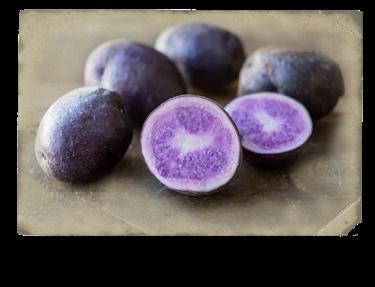
‘Russian Blue’ Potato
This unusual cultivar produces tubers with purplish-blue skin and flesh. Baked, steamed, or fried, this potato retains its unique colour.
Space between plants: 30 cm (12”)
Sowing depth: 10 cm (4”)
Sowing period: in the ground, two to three weeks before the last frost (put tubers in the ground)
Number of days from sowing to harvest: 100
Light: sun
Soil: rich, light, and deep
‘Golden Sweet’ Snow Peas

‘Golden Sweet’ Snow Peas
Some historians say Gregor Mendel used this ancient cultivar from India in his experiments with genetics. ‘Golden Sweet’ produces very sweet, pale yellow pods and purple-pinkflowers that contrast sharply with each other.
Space between plants: 2 cm (0.7”)
Sowing depth: 25 mm
Sowing period: outside in April or May, 4 to 6 weeks before the last frost, or at the end of summer for an autumn harvest
Number of days from sowing to harvest: 50
Light: full sun
Soil: light, fresh, and well-drained
‘Brandywine’ Tomato
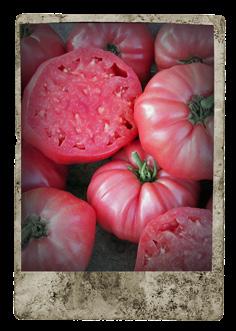
‘Brandywine’ Tomato
The ‘Brandywine’ tomato has been cultivated since 1885 and produces large, juicy, irregularly shaped red fruits. This popular tomato is said to be one of the tastiest.
Space between plants: 50 cm (20”)
Sowing depth: 15 mm
Sowing period: indoors, eight weeks before the last frost
Number of days from planting to harvest: 80
Light: full sun
Soil: rich, loose, and well-drained
‘Marvel Stripe’ Tomato
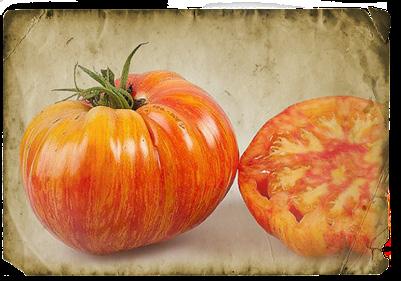
‘Marvel Stripe’ Tomato
Native to Mexico, this ancient cultivar produces large yellow and red fruits that are sweet and not very acidic. ‘Marvel Stripe’ does best when planted in a warm and very sunny place.
Space between plants: 50 cm (20”)
Sowing depth: 15 mm
Sowing period: indoors, nine weeks before the last frost
Number of days from planting to harvest: 85
Light: full sun
Soil: rich, loose, and well-drained
BIO
Passionate about environmental horticulture, urban agriculture and extreme landscape design, Albert Mondor has practised his craft for over 30 years and created numerous gardens in North America. In addition to teaching courses and lecturing at conferences across Canada, his weekly gardening column has appeared in the Journal de Montréal and the Journal de Québec since 1999.




